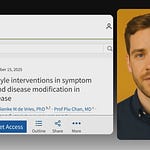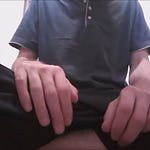Introduction
"How to Stay Young" was a two-part series on the BBC, from a few years ago. For me, its original broadcast was very timely, as it was at the very point I was forming my ideas about applied neuroplasticity in regards to my work on "Out-Thinking Parkinson's". What was uncovered in that documentary series confirmed my own logical thought processes…
Neuroregeneration: The Solution to Neurodegenerative Disease
There are currently no quick fix solutions for conditions like Parkinson's, no magic cures. But the BBC show confirmed to us that neuroregeneration is also possible. By applying the principles of applied neuroplasticity and using the right kind of stimuli to create new brain cells and/or new neural connections between cells [I since worked out that there is also the possibility of upregulating cell receptors on the surface of existing cells, making them more sensitive to incoming chemical information. which is another route to neuroplasticity], it is possible to rewire the brain and bring into play previously redundant or secondary pathways. These types of neuroregeneration can be induced to occur on timescales much faster than any underlying degeneration. Therefore it should be perfectly possible to fully recover.
In an interview for the Telegraph, here's what "How To Stay Young" presenter, Angela Rippon concluded.
“All the experts we met confirmed that holding back neurodegeneration is possible as long as you keep making brain cells and enabling neural connections. So this means trying new things, and setting challenges.”
“Of course, learning a language or doing a daily Sudoku have long been touted as ways to keep the brain sharp - but we discovered that we clever humans adapt so quickly to new skills that our brains aren’t exercised by a nightly puzzle unless we mix it up – take up crosswords or jigsaws instead.”
“Languages are terrific, but learning something totally different, such as Mandarin may exercise the grey matter more than just brushing up rusty French. Life-drawing, I was pleased to learn, is another stimulating alternative requiring thought, concentration and hand-eye coordination.”
“One of the most interesting experiments explored in the documentary set new groups of solitary walkers versus table tennis players to see who would benefit most over 10 weeks. While the pedestrians improved most in actual cardiovascular fitness and creating new brain cells, the players saw a remarkable growth of cortical thickness; the section of the brain associated with complex thinking.”
“They scored higher in mood improvement too. The exercise component was effective, but the real benefit came in terms of pure happiness, thanks to the sociable nature of joining a fitness group.”
“Likewise, when I visited a group in Germany to assess the relative merits of gym work versus dancing, I was delighted (and as a lifelong dancer, not at all surprised) to see that doing the twist was far more beneficial overall than merely lifting weights. Again, the real difference seemed to be the added value of the endorphin boost dancing invoked, plus the novelty of learning new routines, and what you could call the ‘sociability quotient’."
- Angela Rippon, abridged from an article written in the Telegraph newspaper.
My Experience
My first experience of this was initially through persistently moving about to music when in an "off" state [when the symptoms of my Parkinson's are most pronounced, and the PD drugs aren’t working] - every single day for years - constantly exploring new movement routines and building stamina and fitness - I significantly reduced the symptoms of my Early Onset Parkinson's Disease, and am now on a self-accelerating path to recovery.
I kept a video diary of the early years of this process, from which the video at the top of this post is an example. The moves I'm making in these videos were simply unthinkable to me in all those years of accepting the narrative of terminal decline. I hope this demonstrates that by setting oneself daily challenges, being curious about ones own body and mind and remembering music and play - anything is possible.
I have also made the “My Experience with Dance Therapy” chapter of the “Gary’s Story” section of the HOPE-shortcut Community Area, that I am creating in lieu of a book, available, so you can see for yourself how things evolved:
You can also support me through signing up to the Community Area to read more about the rest of my personal journey.




